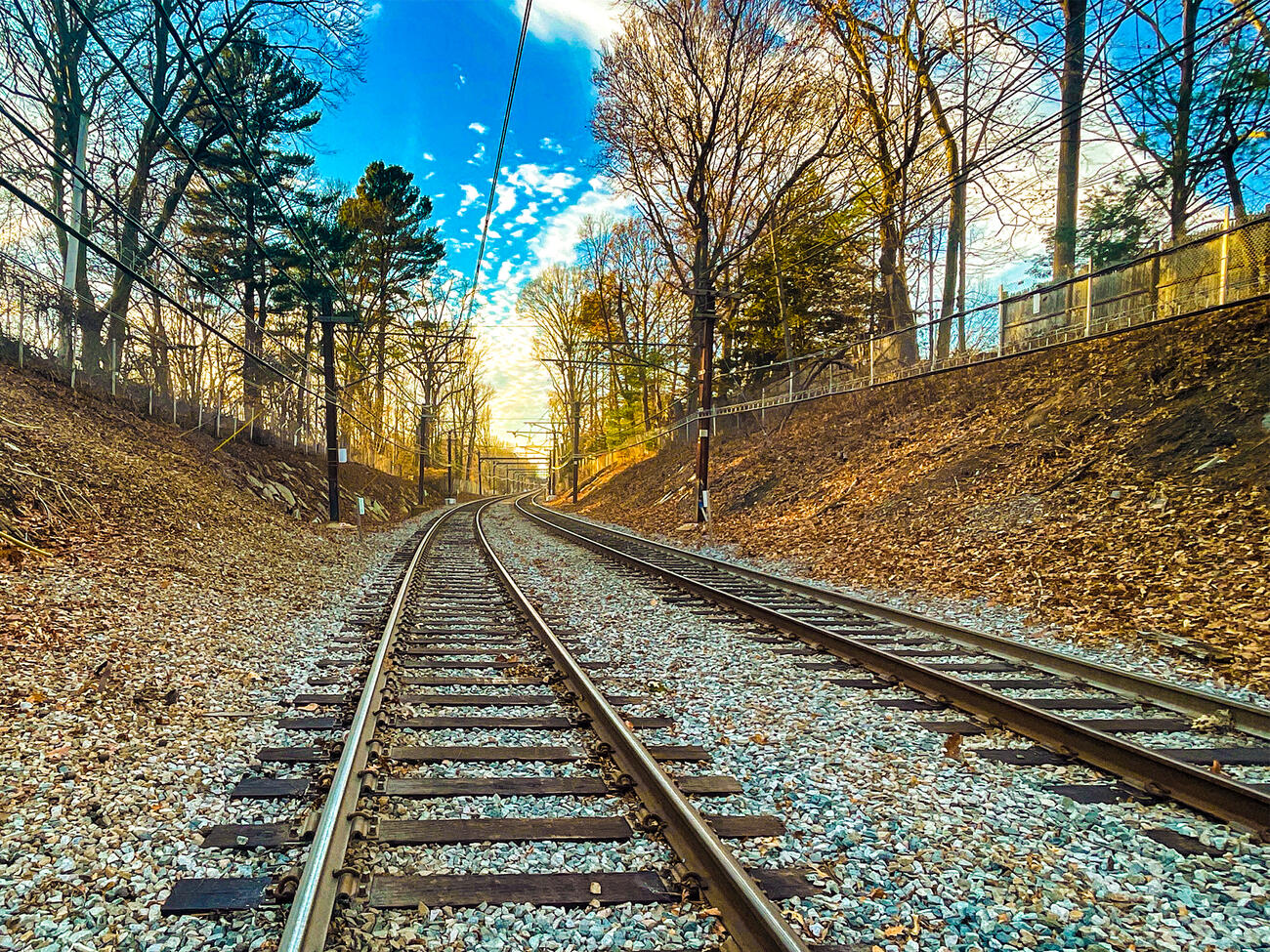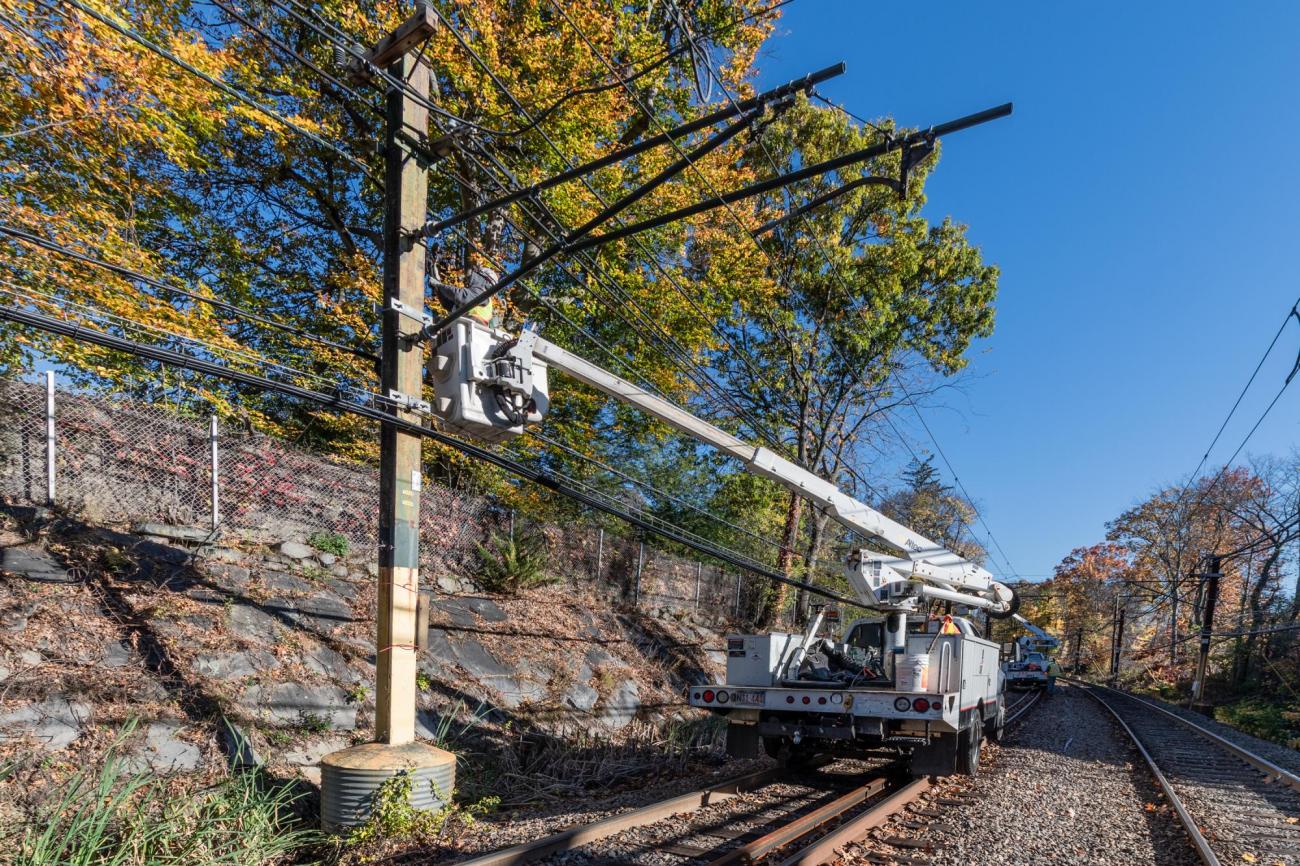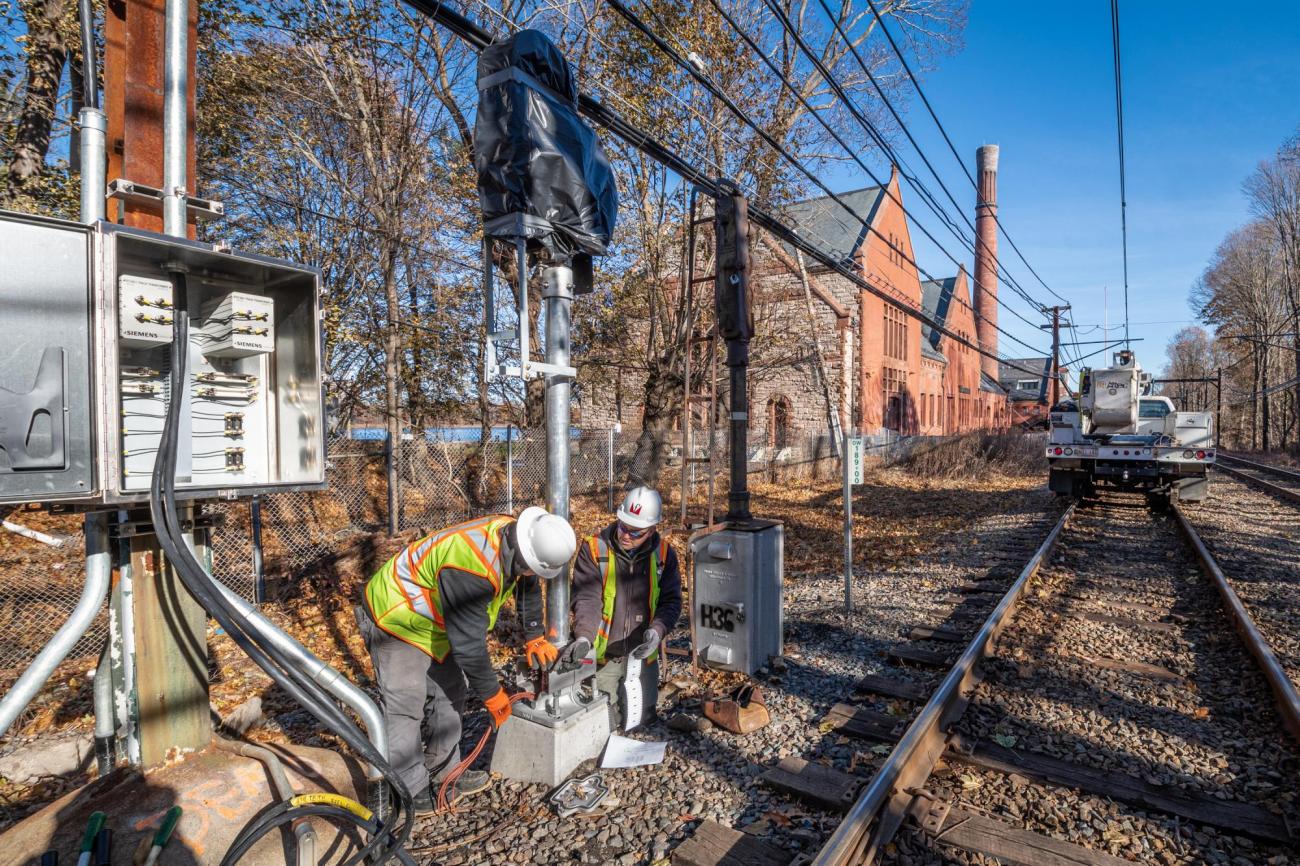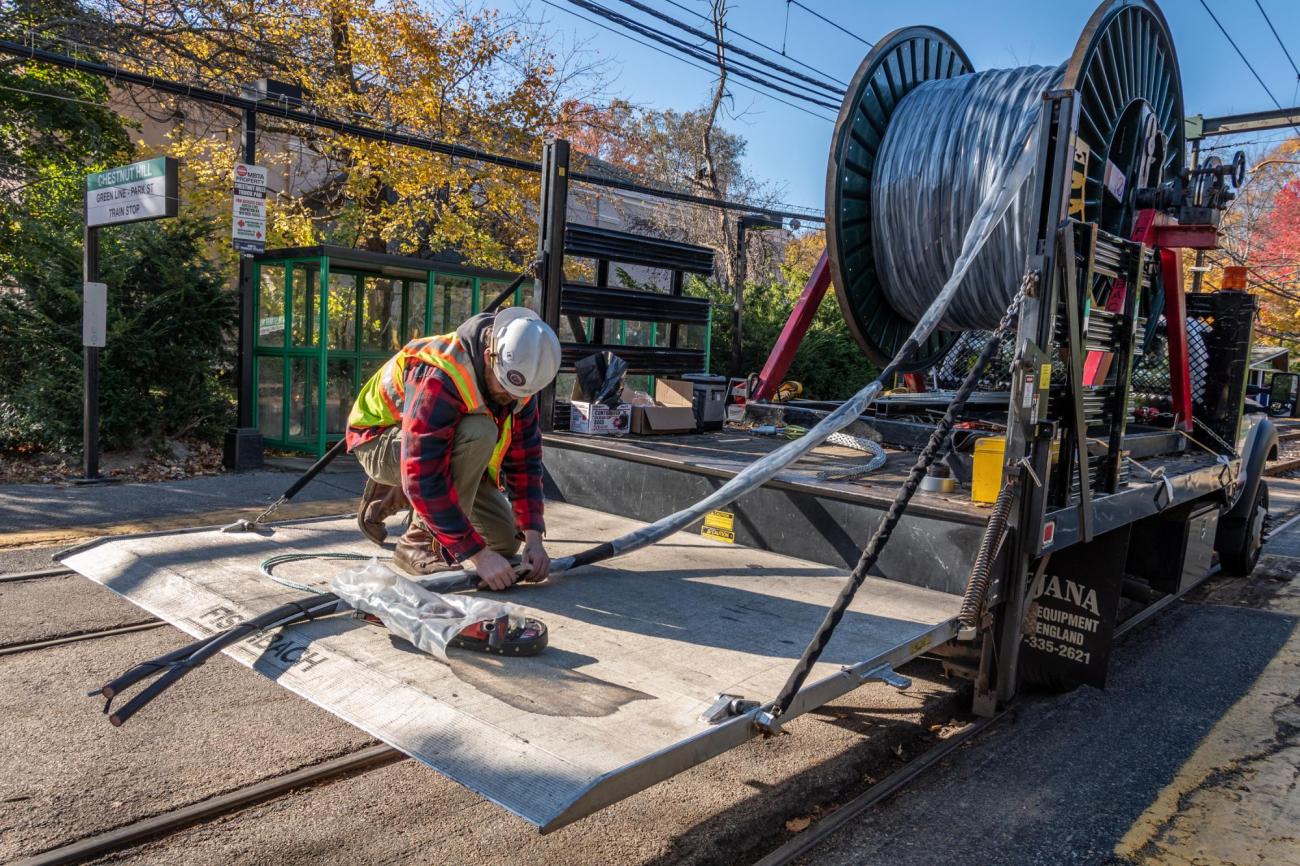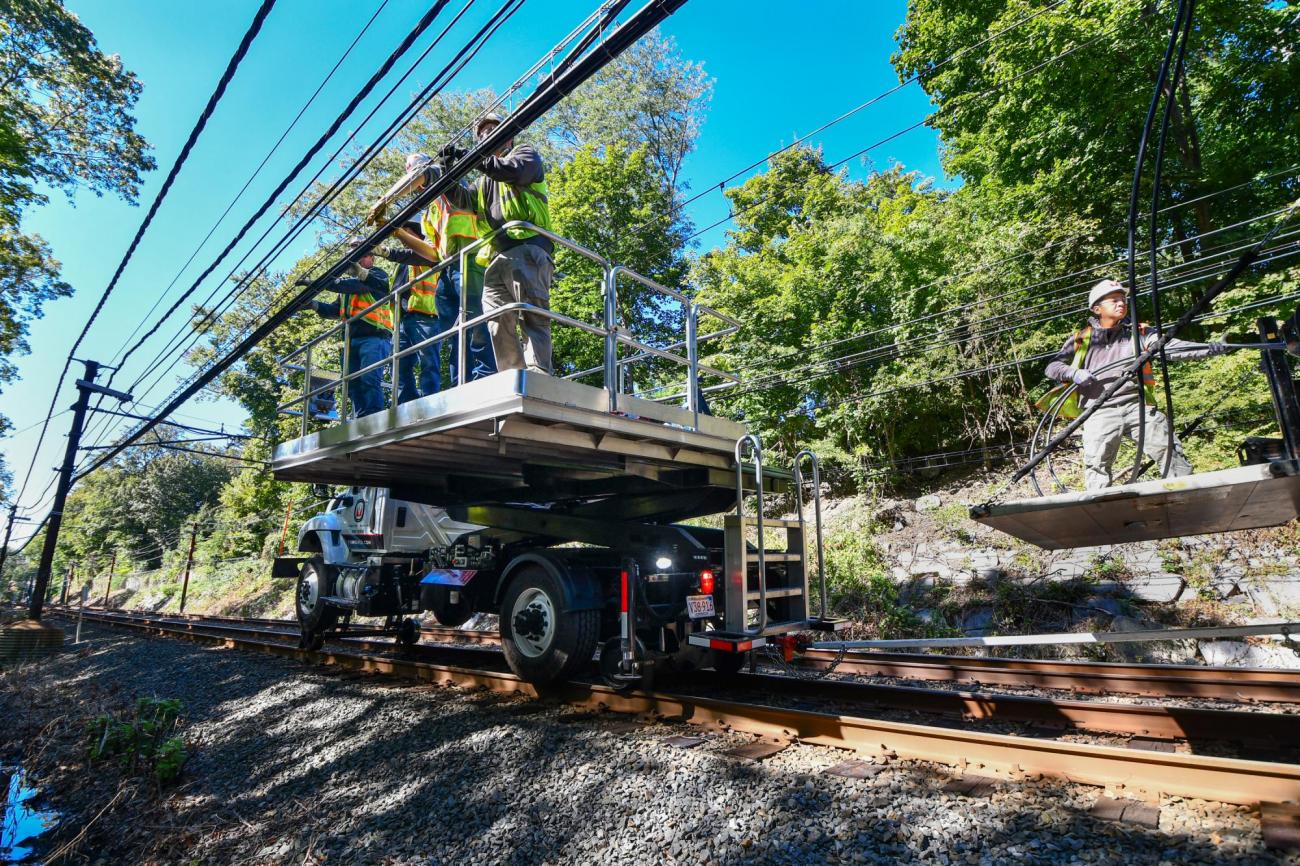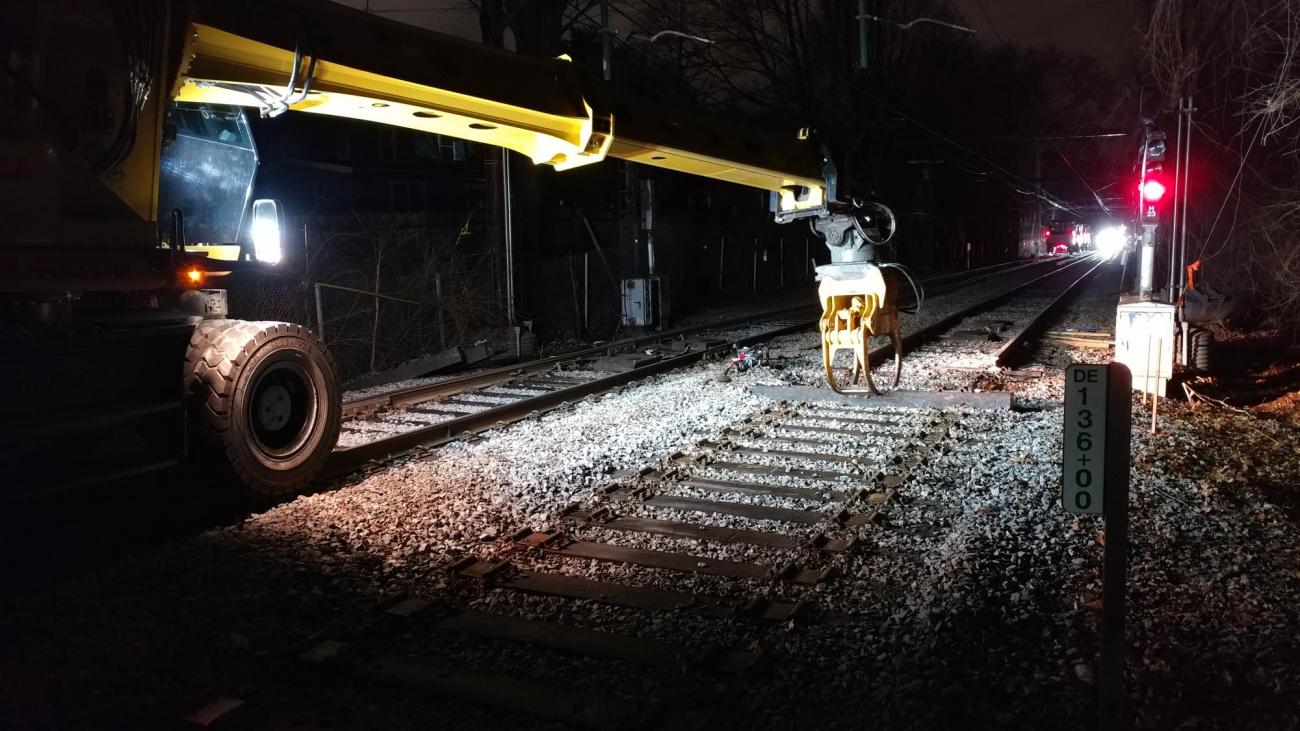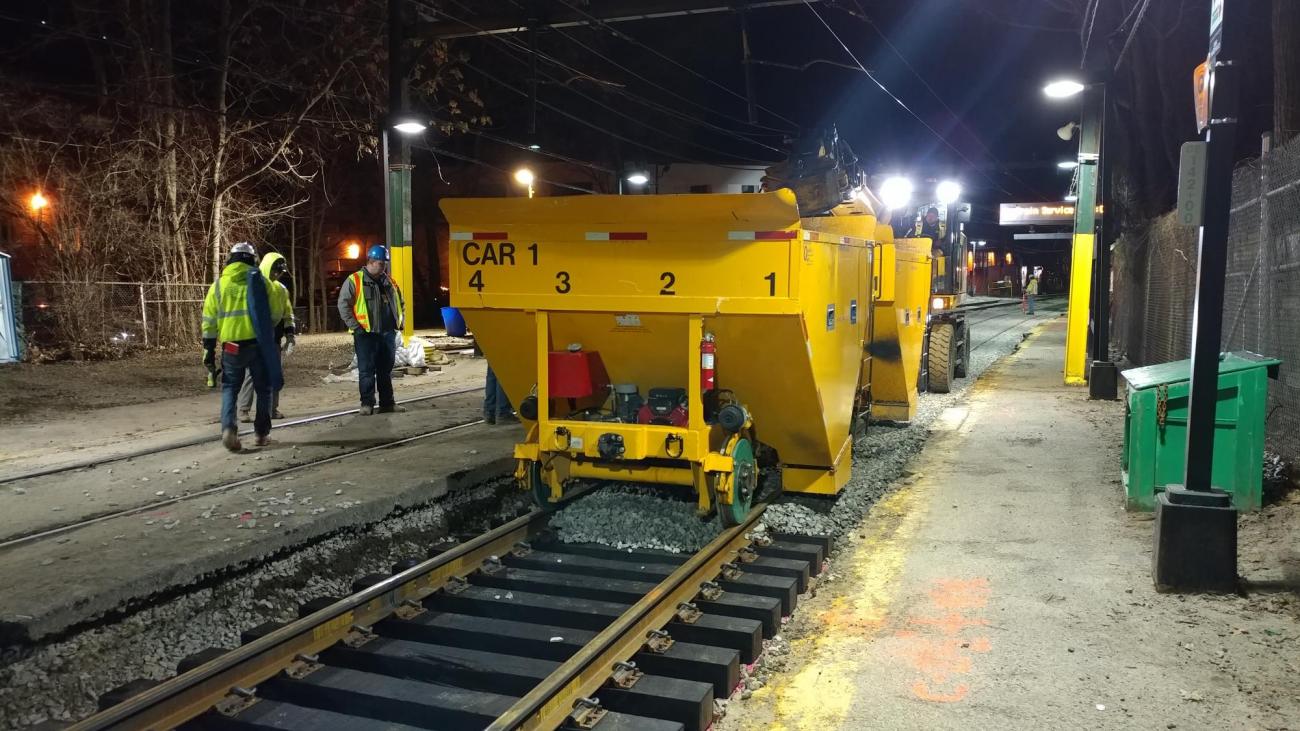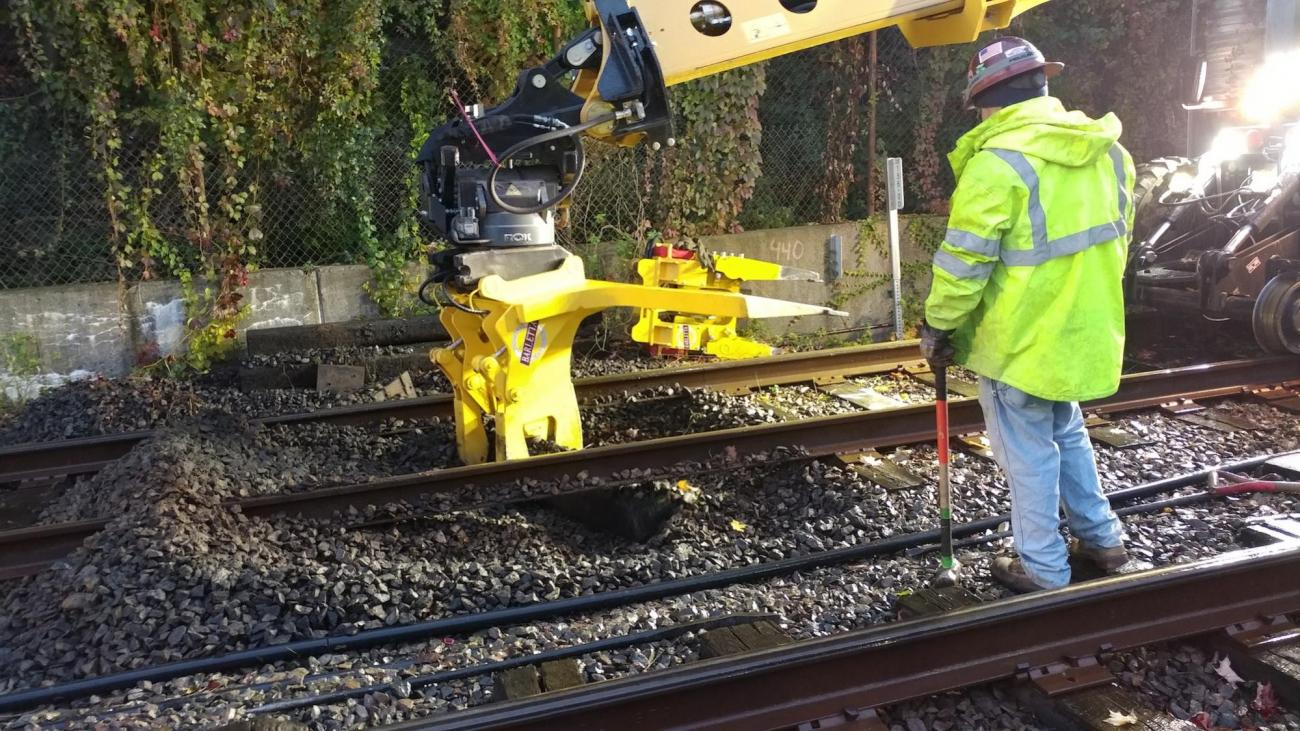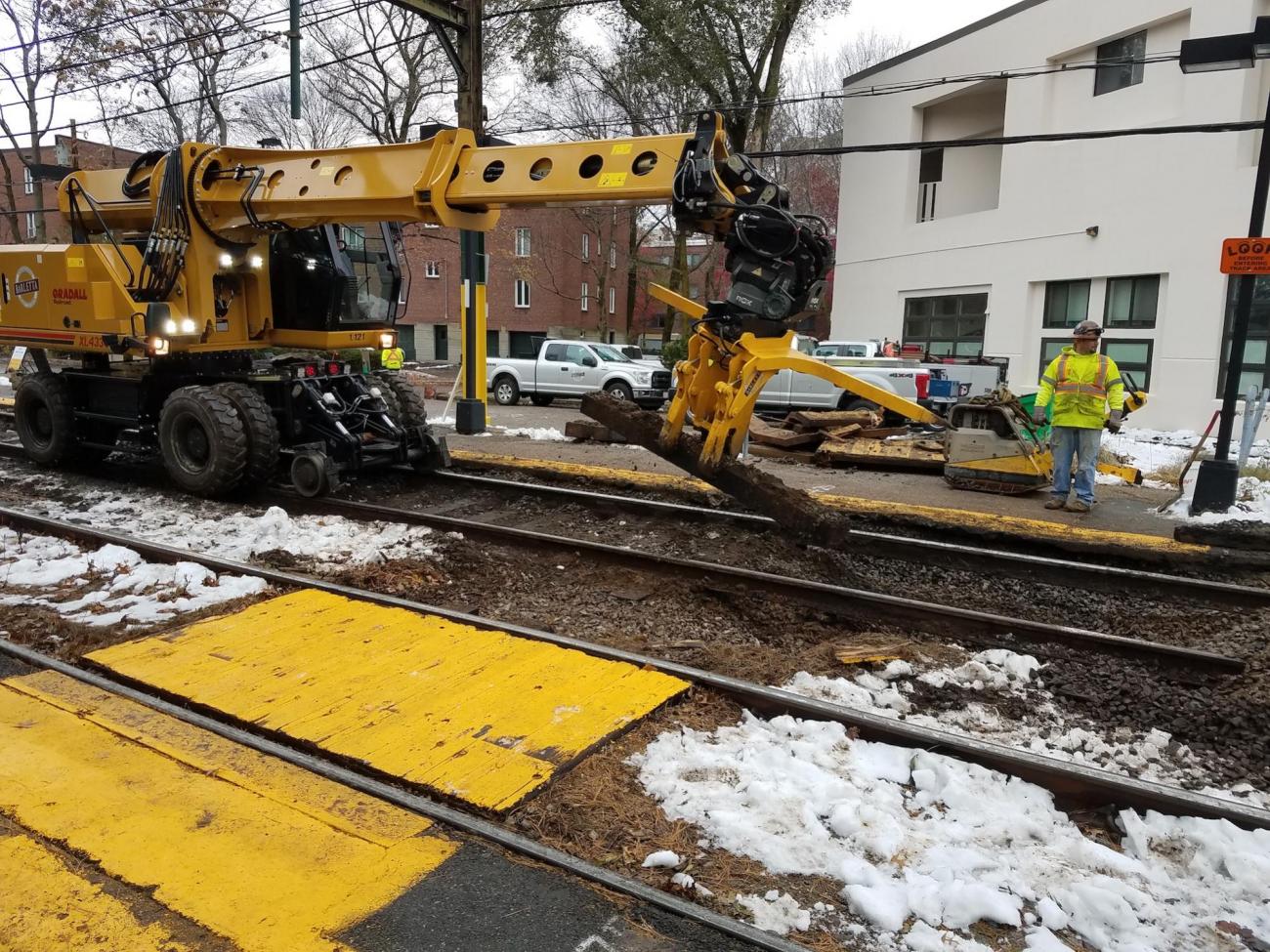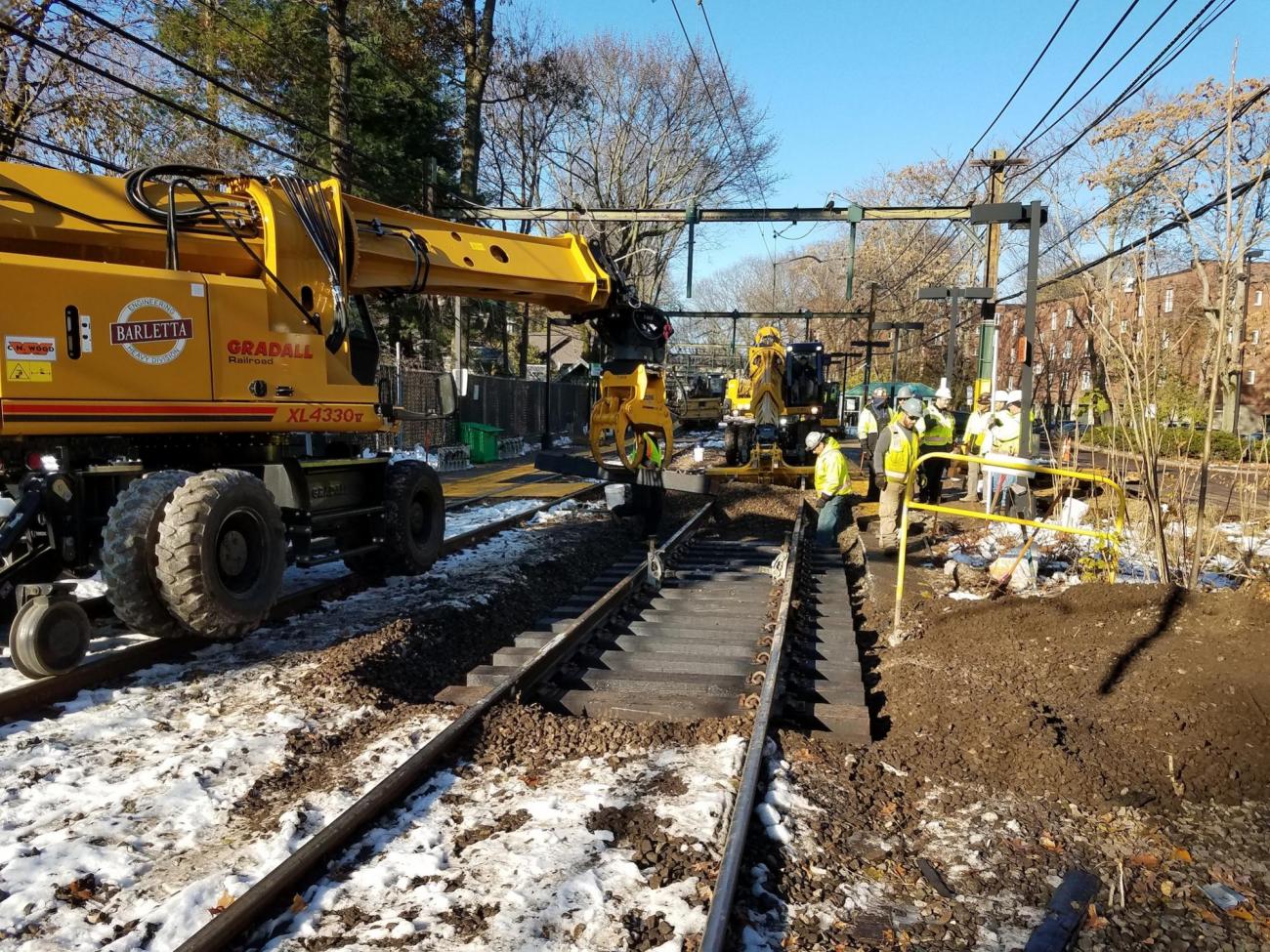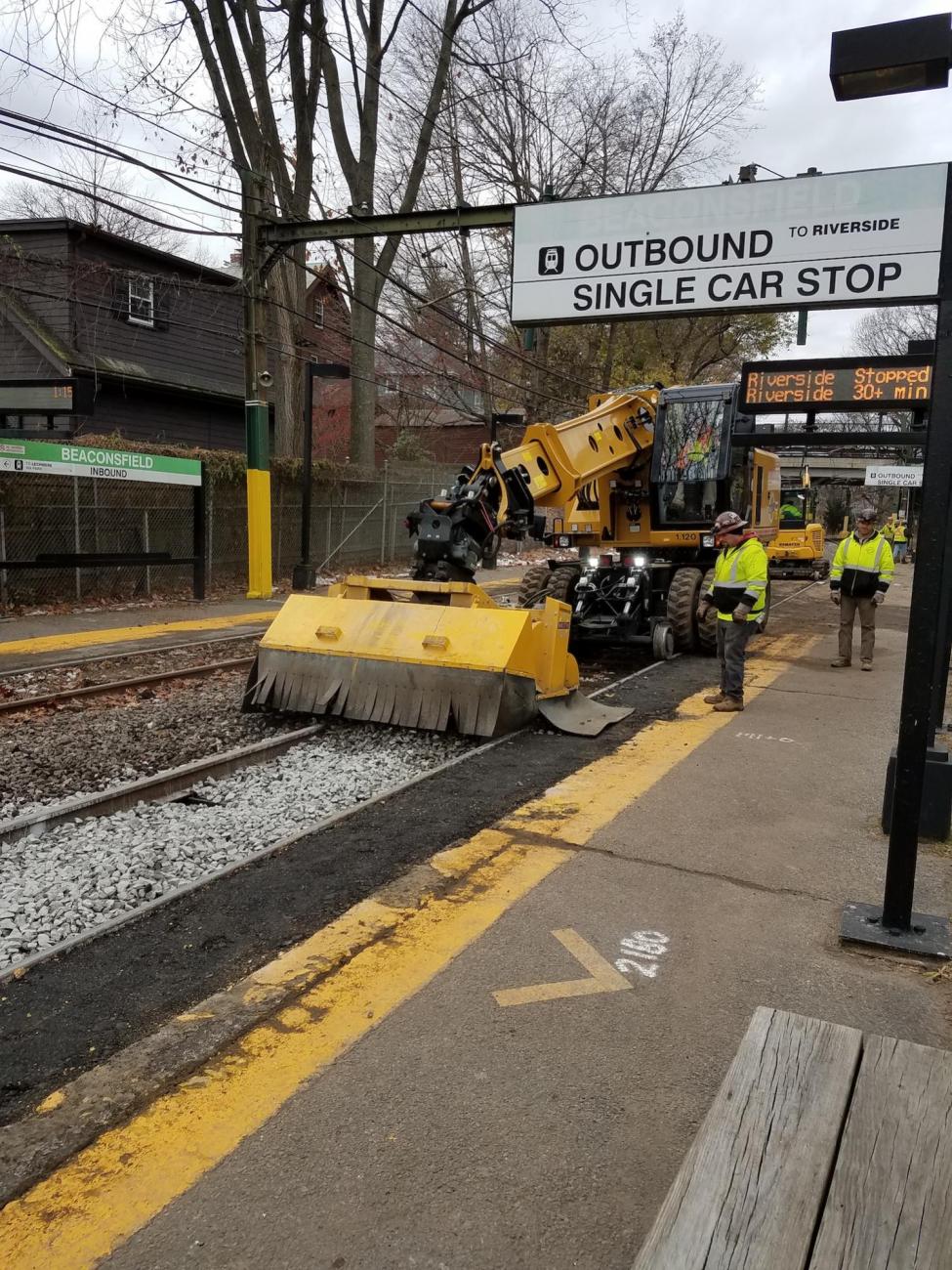Green Line D Track and Signal Replacement
Building a Better T
As part of our $9.6 billion, 5-year capital investment plan, we're renovating stations, modernizing fare collection systems, upgrading services for our buses, subways, and ferries, and improving the accessibility of the entire system.
As part of the Green Line Transformation (GLT), we replaced 25,000 feet of track and 6.5 miles of signals on the Green Line between Beaconsfield and Riverside on the D Branch.
Recent Updates
- Contract awarded: June 2018
- Project completed: December 2021
- Budget: $101,600,453
- Status: 100% complete
As part of the Green Line Transformation (GLT), this project meets the following goals:
- Service delivery: Speed restrictions lifted on some sections of the Green Line for faster service
- Safety and resiliency: New tracks and signals mitigate risk of service interruptions due to track conditions and reduce time and money needed for maintenance
To do this work, we needed to shut down service on most weeknights and weekends. We coordinated D Branch shuttle service with Fenway Park, the Brookline High School Expansion Project, and other D Branch work.
Why We Did This Work
The D Line used to be a Commuter Rail route, and much of the signal infrastructure was installed when it was converted to light rail in the 1950s. Those signals were still helping us run trains safely when the project began in 2018, but they were not as efficient as modern signal systems. When they indicated a problem, a crew member had to go out to the tracks to diagnose and fix it. This could cause long, frustrating delays in service.

We replaced the outdated signals with a more centralized digital system that’s easier to maintain and monitor. When there is a problem, our team will be able to diagnose and fix it more efficiently.
Railroad tracks can last many decades. To ensure your safety, engineers regularly measure the wear and tear on all the tracks in our system—that includes checking the rails, railroad ties, and ballast, which is the gravel between the rails that helps with support and drainage.
The tracks between Beaconsfield and Riverside were still safe for daily use, but our engineers decided it was time for all new tracks, ties, and ballast. Because this is such a big part of the Green Line, work was broken up into sections and done on nights and weekends when fewer people ride the Green Line.
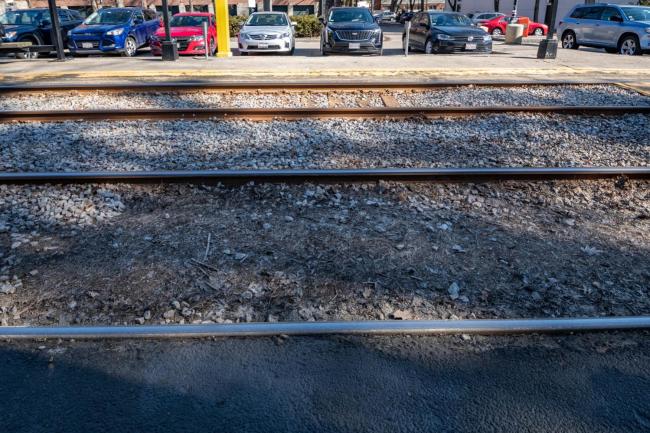
Now that the new tracks have been installed, you’ll notice that Green Line trains can travel faster. They've allowed us to lift speed restrictions on what were particularly outdated sections of the route.
What We Did
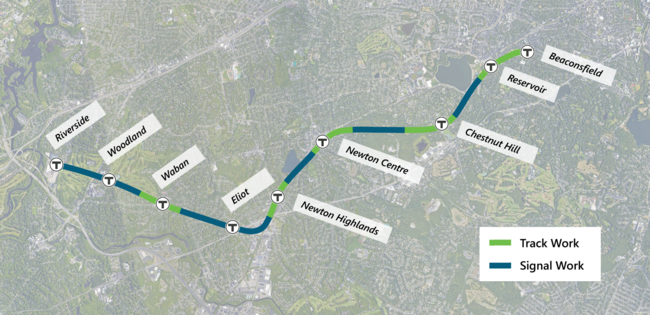
From west to east, work included:
- Riverside: Track and signals
- Woodland: Signals
- Waban: Track and signals
- Eliot: Signals
- Newton Highlands: Track and signals
- Newton Centre: Track and signals
- Chestnut Hill: Track and signals
- Reservoir: Track and signals
- Beaconsfield: Track
Shuttles replaced train service during many weeknights and weekends.
As part of accelerated work on the D Branch Track and Signal Replacement project, four nine-day, full-access closures were completed in summer 2020 and summer 2021. Free, accessible shuttle buses ran all day, every day during these closures.
Related Projects
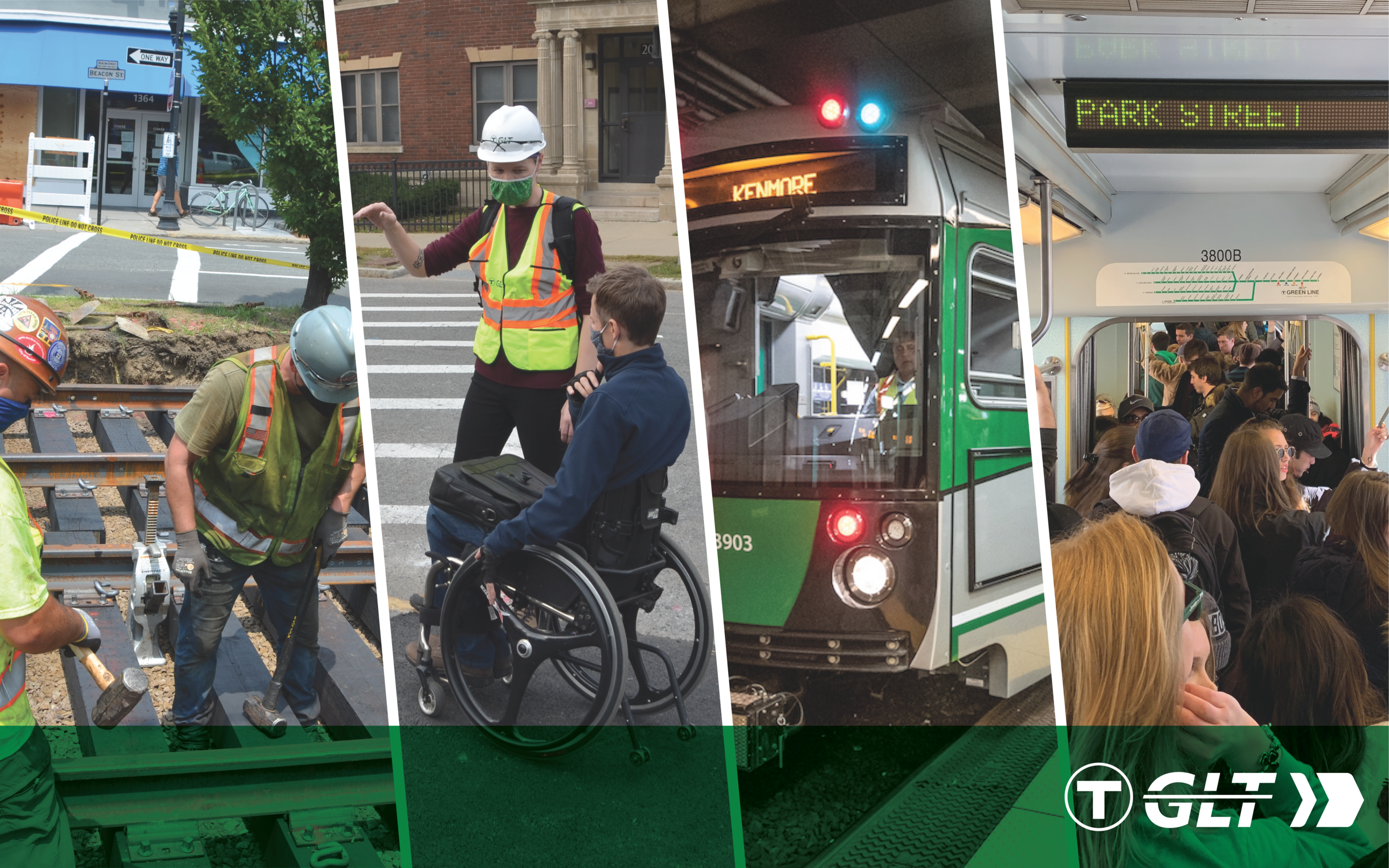
This project is one of many we're working on to ensure twice as many passengers have access to a safer, more comfortable, and more reliable Green Line by 2030.
What to Expect if You Live in the Neighborhood
The track work at these locations included replacing rail, railroad ties, and stone ballast. The noisiest work occurred when crews cut the rails with a saw or torch and tamped the track to the proper elevation.
We used several strategies to minimize noise disruptions for neighbors, including the following:
- Assembled track panels off-site
- Accessed work sites through the MBTA right of way
- Used self-adjusting backup alarms, silencers, or mufflers on equipment
- Limited truck and equipment idling
- Lined dumping bins, hoppers, and trucks with sound-deadening material
- Used noise blankets and shielding where possible
We monitored noise levels and responded to all noise complaints.
Photo Gallery
Past Events
Contact Us
For all queries and comments related to Green Line D track and signal replacement, please contact GLT@mbta.com.
To report a noise complaint or issue, call the 24/7 noise hotline at 617-222-4100.
For More Information
Get project news, updates, and information delivered to your inbox.
Building a Better T
As part of our $9.6 billion, 5-year capital investment plan, we're renovating stations, modernizing fare collection systems, upgrading services for our buses, subways, and ferries, and improving the accessibility of the entire system.
Recent Updates
Related Projects

This project is one of many we're working on to ensure twice as many passengers have access to a safer, more comfortable, and more reliable Green Line by 2030.


